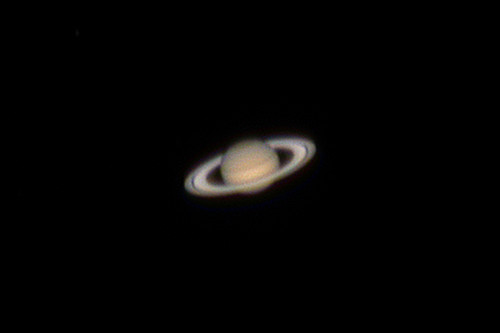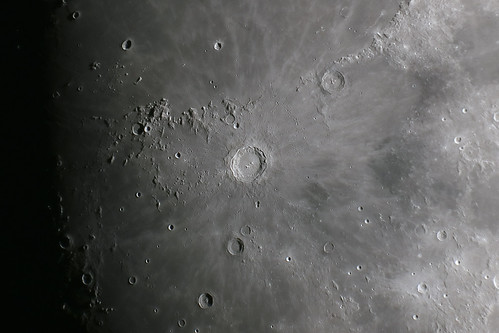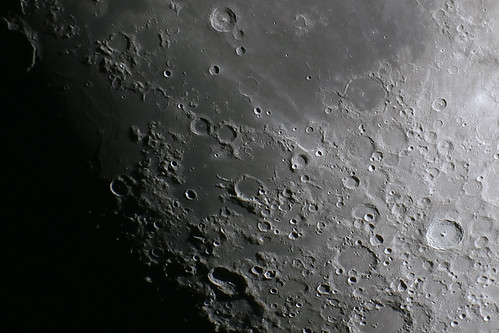2 November 2021, 21:45 – 23:45
Seeing: Poor
Transparency: Good – Average
Conditions: A still, windless night after a surprisingly warm sunny day (but the lawn was still very muddy from the rain of recent days). In the afternoon I walked up to North Foreland, where the countless strands of spider-silk backlit by the sun made the farmer’s fields look like they were covered with fine silver blankets. The Clear Outside forecast (which is usually pretty reliable) was confidently predicting cloud and fog after dark, but it mostly remained clear, with just a few patchy clouds gathering in the northeast. However there was a lot of moisture in the air, mostly affecting the eyepieces. The low sunlight during the day had also left me with quite the headache; it took more of an effort to concentrate on what I was seeing, so I was pretty tired by the second hour of observing.
Also of note: a couple of bright blue flashes of light somewhere to the south which I thought might have been early fireworks, but there was no follow-up sound. Perhaps a distant storm was passing through the Channel.
NGC 246 (Caldwell 56), planetary nebula, Cetus
92x + OIII filter. Large (for a PN) bulbous haze; barely visible without the filter and still quite faint even with it in place. Speckled with 3 or 4 faint stars, one of which is presumably the central illuminating star. (The three brighter stars form an isosceles triangle.) This slightly punctured, speckled appearance made it seem like a cross between the two PNs NGC 6781 and NGC 6804 in Aquila. When observing an object for the first time I try to go in “cold” with little or no prior knowledge, but in this case I was vaguely aware that NGC 246 was nicknamed the Skull Nebula. With averted vision it does indeed have a blotchy, skull-like appearance. It’s certainly a more appropriate nickname than the “Pac-Man Nebula” which, confusingly, is also the informal name for NGC 281 in Cassiopeia.
NGC 253 (Caldwell 65), the Silver Coin Galaxy, Sculptor
92x. After several previous failed attempts to spot this galaxy I wasn’t getting my hopes up, but – after careful positioning of the scope to see through a gap in the neighbours’ foliage – I finally saw it as a large, faint and rather elongated ellipse angled NE to SW. Two field stars to the south and another one north, with a few fainter stars superposed on the galaxy, including one just west of the core. Averted vision showed the galaxy brightening smoothly towards the centre, but no bright core/nucleus or other details were apparent. Although faint, it wasn’t “vanishingly” faint like some of the more challenging objects I’ve tracked down, so I’m surprised it’s taken me this long to see it. I guess the sky conditions have to be just right. Having an Ethos also helps; I’m not sure I would have spotted it in any other eyepiece.
It’s a challenge for me to see any galaxy below -20 degrees declination, so although it wasn’t visually impressive, the fact I can see NGC 253 at all demonstrates that (like M83) it must be a spectacular sight from more southerly latitudes.
While in the area I also looked for globular cluster NGC 288 (which lies a couple of degrees south of NGC 253), but I couldn’t see it with any degree of confidence. I guess it must lack the central condensation of more typical globulars, plus the obstructing foliage didn’t help.
M77, Seyfert Galaxy, Cetus
92x. As per previous observations. Small, bright galaxy with an intense star-like nucleus. The nucleus seemed blue-ish, but this may have been because I had just come from Delta Ceti (which looks very blue in the Ethos). The surrounding haze swells with averted vision. Bright field star to the east. This is one galaxy that benefits from higher magnification.
A faint point of light was just about visible in the 9x50 finder at the corresponding location, but was impossible to tell whether it was the galaxy or the adjacent field star (or a combination of both).
NGC 1055, galaxy, Cetus
92x. North of M77. Very faint streak of light forming a triangle with two bright field stars to the north. Another fainter field star on the western end of the galaxy.
NGC 488, galaxy, Pisces
92x. Faint round haze west of a bright field star. Star-like core with averted vision. Another fainter field star on SE of galaxy. Visually, this one reminded me of NGC 278 in Cassiopeia.
The PSA plots a couple of other galaxies in this region, but I was unable to see them. I then relocated to M74, but the so-called Phantom Galaxy was even fainter than usual, at which point I noticed that the eye-lens of the Ethos was starting to succumb to the condensation. With the clouds starting to encroach from the northeast, I switched to the 7mm DeLite and made a return trip to M77.
M77, Seyfert Galaxy, Cetus
171x. The oval shape of the galaxy was more pronounced at this magnification, and there was more distinction between the bright core and the nucleus embedded within it, but the poor seeing smeared out any fine detail I was hoping to see. The core still seemed slightly blue, but not as much as at 92x.
Although the DeLite has a similarly-sized eye-lens to the Ethos, I thought the raised eye-cup design might provide better protection against the condensation. Unfortunately, it wasn’t to be, so I was forced to switch eyepieces again.
After a first look at M42 for the season (just clearing the fence) and quick trips to M78 and the Pleiades, I rounded off the session with a look at one of the best open clusters of the winter.
M37, open cluster, Auriga
133x and 50x. Magnificent as usual: a water beetle with a jewelled heart. Looks best at low-to-medium powers. The 24mm Panoptic’s field is wide enough to show a bright orange-red star southwest of M37, contrasting with the pale red star at the centre of the cluster.
Other notes:
I glimpsed a few faint meteors while I was taking breaks from the eyepiece. I also heard a few more Redwings flying overhead.







